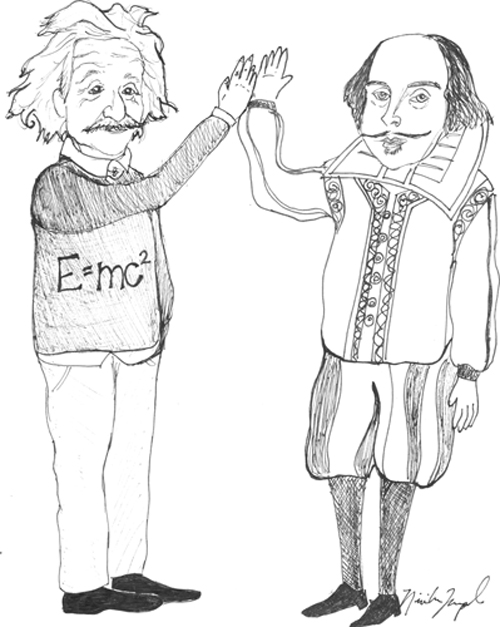In the distinction between the applied arts and liberal arts, have the math-brained recently won the upper hand? According to the White House Office of Science and Technology Policy, in December 2012, the Obama Administration announced an initiative to produce one million students with undergraduate degrees in science, technology, engineering and math (STEM) over the next decade. This initiative was implemented in order to address a lack of American students in STEM careers.
Even in the midst of our STEM-focused nation, I must contend that the humanities have an important spot in our academic curriculum and our society. This importance can seem overshadowed, though, when the extension of STEM is even present at South. Last year, South instituted Project Lead The Way in an attempt to help locally fill the shortage of STEM in the workforce and in our educational studies.
Dawn Hall, Applied Technology instructional supervisor, explained why this program was included.
“We are in a technological economy,” Hall said. “The jobs of yesterday were more manual, [but now] they are technology–based and more high-skilled. We need to prepare people for those.”
For those of us who never really understood Chemistry or Pre-Calculus, this is a scary statement. I am hesitant to pursue a career in the humanities because I equate it with low pay and job instability, whereas becoming an engineer means a high income and a more “necessary” place in today’s society, right?
On the contrary, I don’t think most people, even the doctors and engineers, are arguing that the humanities are unnecessary or unimportant. If you excel in English and despise Algebra, it’s easy to demonize the nationwide emphasis on STEM as an assault on the arts. But, because technology has exploded over the past few decades, this emphasis on STEM in the workforce and in our education system is a natural response—not a purposeful remark on the insignificance of the humanities.
In reality, tough decisions do sometimes have to be made when planning a budget. At South, we are lucky because our school can afford to supply an array of classes; however, if money was an issue, music classes might be cut in order to fund science classes, simply because that’s where there’s an increase of jobs today. This does not mean, though, that other subjects are less important.
When I was writing this column, I realized that I called it “STEM versus humanities,” as if the two subjects were fighting forces. In truth, both fields are necessary in a complete society. They do not always compete in the job market or in school budget meetings; in the real world, they complement each other.
While STEM and the humanities are certainly different in many respects, both subjects require formula, reason, curiosity and more, and their individual traits often cross boundaries. For example, there’s philosophy in math; infinity is more of a concept than a number, isn’t it? And the arts thrive off of science; music is derived from calculated theory.
According to Hall, some schools have recently added an “A” for “Art” to their STEM programs, creating “STEAM,” in an effort to recognize the importance of design in technology. While STEM teaches students the tools they need to engineer, the humanities foster a sense of innovation and creativity. Alternately, STEM allows students with ideas to put them into action and yield a tangible result; the two subjects feed off one another.
Pursue what you’re interested in, and don’t worry about national trends. Most importantly, take advantage of the opportunities we have in high school; South offers such a variety of classes, from Drama to Project Lead The Way, not to direct you into one course, but to allow you to explore your options. When you find your passion, whether it falls within the bounds of STEM or the humanities or is a combination of both, chase it and the happiness and fulfillment will follow—that’s true success.








